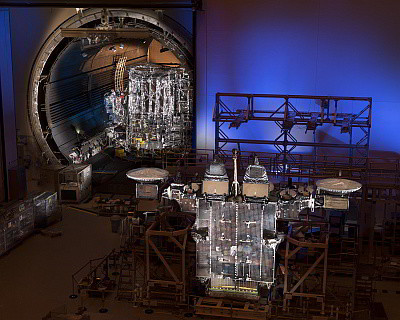US AEHF comsat undergoes testing

The US Air Force’s fifth Advanced Extremely High Frequency (AEHF-5) satellite has passed a rigorous launch simulation and has now moved on to the system-level testing phase.
AEHF-5 underwent 39 days of thermal vacuum chamber (TVAC) testing, where it was subjected to the kind of extremely hot and cold temperatures it can expect to experience in orbit.
It next underwent acoustic testing, where it was blasted with high-intensity, low-frequency sound waves to simulate the vibrations experienced during launch.
“TVAC and acoustic tests are critical milestones in the production cycle of a satellite, where we have one shot to get it right, so we take every precaution to ensure the vehicle is ready for the harsh space environment,” said Michael Cacheiro, Vice President for Protected Communications at the satellite’s manufacturer, Lockheed Martin Space.
AEHF-5 will be delivered to the US Air Force in 2019, joining a constellation of satellites that provide worldwide, secure communications for US and allied military forces.
The fourth satellite, AEHF-4, will be launched from Cape Canaveral Air Force Station later this year.
Once in space, AEHF-4 will complete the minimum number of satellites needed to achieve global Extended Data Rate (XDR) connectivity.
“XDR adds an unprecedented protected communication capability, providing 10 times more communications throughput than the legacy MILSTAR constellation,” stated Cacheiro.
Please follow us and share on Twitter and Facebook. You can also subscribe for FREE to our weekly newsletter and bimonthly magazine.
Comms Connect NZ heads to Wellington in 2026
The 2026 edition of Comms Connect New Zealand will take place in the new Takina Convention and...
Leonardo commits to mission-critical comms with ARCIA membership
Leonardo brings decades of global expertise in secure communications, cyber-resilience, emergency...
Webinar: Turning data protection into a business advantage
Backup is no longer a safety net, but a strategic tool for risk reduction — and the...




